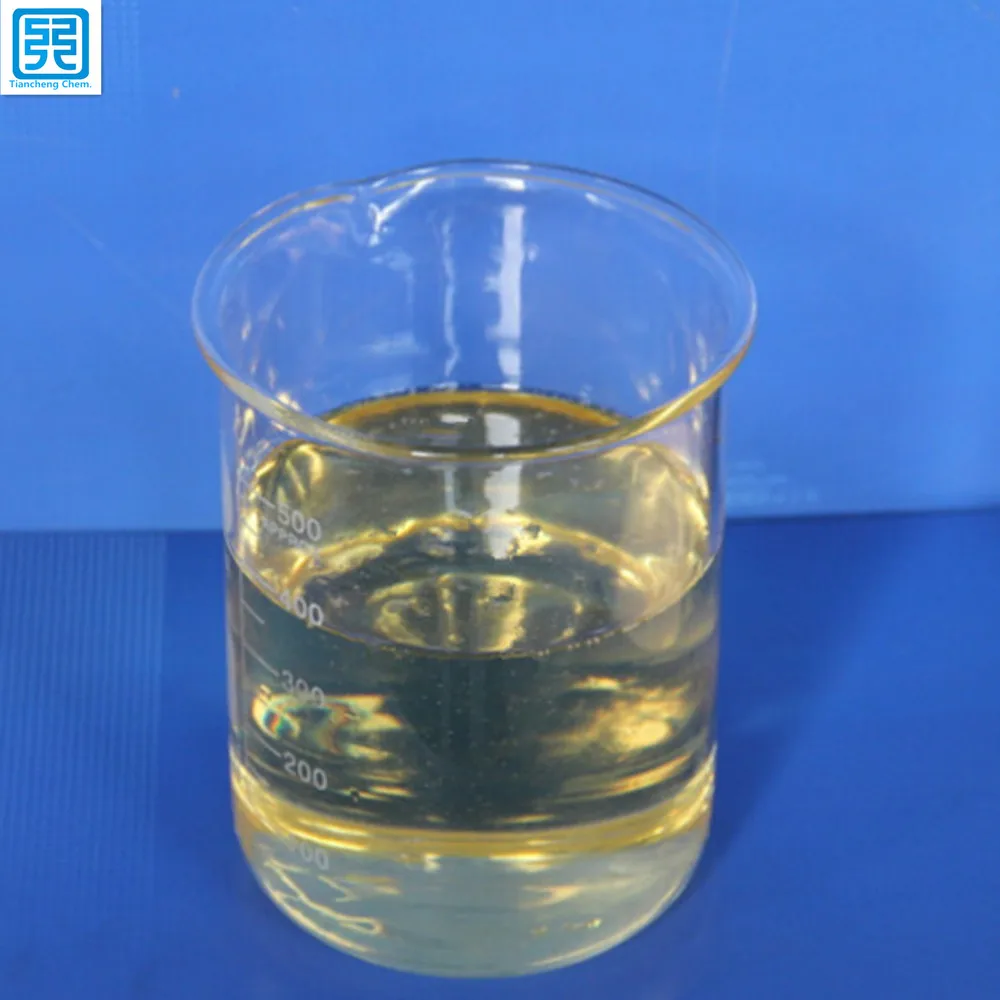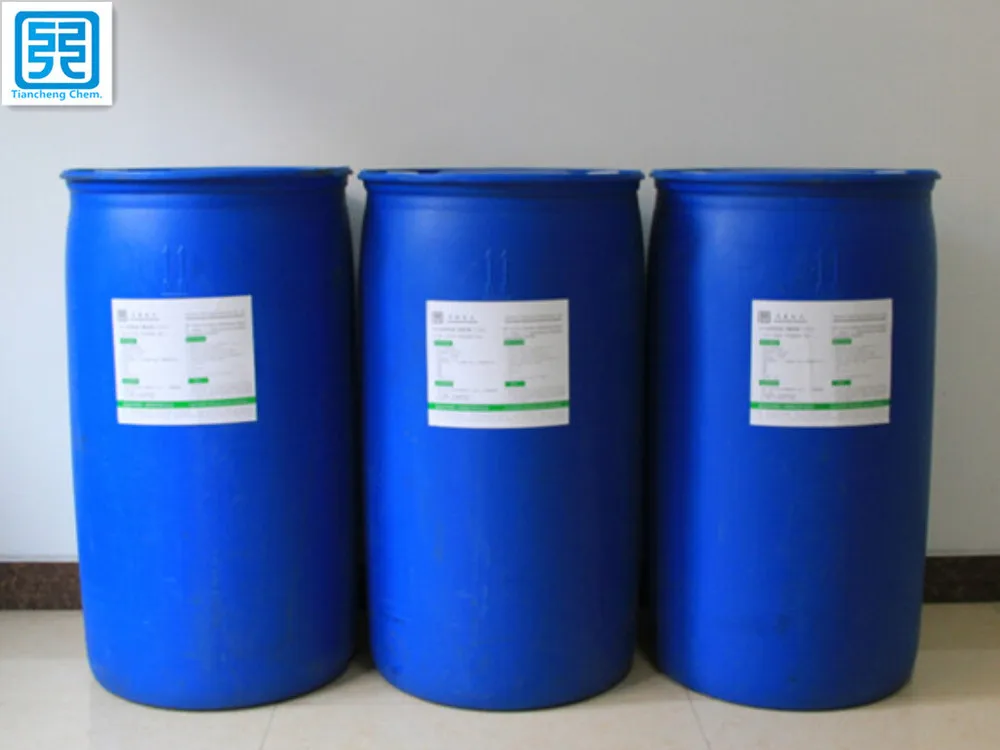With the constant improvement of economic level, people` requirements on the quality of paper are increasing high. A great number of paper products must have excellent resistance to fracture under moist state, in other words, must have a certain degree of wet strength. While the traditional papermaking wet strength agents are urea resin and melamino-formaldehyde, both belonging to formaldehyde resin with intense pungent smell and certain toxicity, and can be used in acid condition to acquire the wet strength. However the whiteness will descend a lot and the paper will be weak after the finished paper acquiring the wet strength. Polyamide polyamine epichlorohydrin resin (PAE) is water soluble, cationoid and thermosetting resin. This product is a non-formaldehyde polymer, non-toxic and tasteless, with a wide range of PH value and suitable for acid, neutral or slightly alkaline papermaking conditions, as well as the acid condition. Wet strength effect is better than the urea-formaldehyde resins and melamine formaldehyde resin. PAE resin, which is an excellent wet strength agent, develops fast in recent years with China`s paper industry development.
The high performance papermaking wet strength agent (PAE) that we produced has been widely used in a great amount of domestic factories and the finished paper products` wet strength index has surpass the similar products in domestic and foreign counties.
1. Performance Indicators
Item
Indicator
Appearance
Light yellow to light amber translucent liquid
Solid content,%
25
Viscosity mpa.s (25℃)
25~70
PH value
4.0~6.0
Density kg/l
1.03
Ion type
Cationic
Ice point (℃)
-1℃
Storage period (under normal temperature)
≥90
Solubility
Diffluent in cold water
2. Application
PAE active ingredient is polyamide epichlorohydrin thermosetting resins that can be used as below:
1. Paper products with the need for drying or wiping water, such as: napkins, wet tissue paper, facial tissue, paper napkins, kitchen towels, wiping window paper, industrial wipes, lens wiping paper, cosmetic paper etc.;
2. Outdoor paper: such as kraft paper, packing paper, outdoor poster paper, construction paper, sack paper, map paper, germinating paper, fruit bag paper;
3. Wet wrapping materials: such as paper cups paper, meat paper, wrapping paper and boxes for fruits and vegetables, frozen and refined food packaging paper, pressure sensitive copy paper, filter paper, leaching processing paper and tea bag paper;
4. Paper soaked in water: as photographic raw paper. Instead of disposable textile products, such as hospital bed sheets, toilet paper and other disposable hospital garb.
Other issues such as cigarette paper, paper used for invoices.
PAE, as wet strength agent excellent efficiency (PAE), has been widely accepted by the papermaking industry
5. Storage Condition
Storage: Avoid direct sunlight, prohibiting contact with concentrated acids. Storage temperature is 0 ~ 35 ℃and the product can be stored for up to 3 months under 5 ~ 35 ℃.
4.Package and Transportation Safety
Package: 200 kg polyethylene barrels or 1000 kg IBC barrels.
Transportation: The product is non-flammable, non-explosive and low corrosive and non-dangerous. It can use plastic buckets as containers on railways, highways, aviation, marine to achieve the purpose of the safe transport, and if the leaking occurs during transportation, you can simply rinse on the spot.
Wet Strength Agent,Polyamide Epichlorohydrin Resin,WSR,Wetting Strength Agent Shandong Tiancheng Chemical Co., Ltd. , https://www.tianchengchemical.com Is the thickness of the fermentation mattress material supposed to be geometric?
Many of our customers have used our Golden Delicious microbial fermentation products and achieved excellent results, which has made our Golden Baby products more trustworthy. However, some users haven't seen the expected outcomes. The issue isn't with the product itself, but rather with mistakes made during the application process. For example, when using microbial fermentation beds for pigs, many foreign systems require a thickness of up to one meter. However, our Golden Dolphin fermentation bed uses advanced technology to achieve the same effective results with just 50 cm in thickness, while also being cost-effective for pig farmers. Despite this, some people mistakenly believe that 30 cm, 25 cm, or even 20 cm is sufficient. This assumption is completely wrong.
At first, a thin fermentation bed may still work for a few days, but as the fermentation process progresses, it becomes insufficient. A too-thin layer can’t properly create a humidity gradient, leading to poor absorption of excess moisture and overloading from pig waste. As a result, the bed becomes saturated quickly. When this happens, spoilage bacteria start to dominate, causing the temperature to drop and the bed to emit a strong, unpleasant odor. Additionally, pigs naturally tend to arch their backs, and if the fermentation bed is not thick enough, repeated arching can damage the structure, ultimately rendering the fermentation bed ineffective and losing its purpose entirely.
It's important to follow the recommended thickness guidelines to ensure optimal performance and long-term success with your fermentation mattress system.
